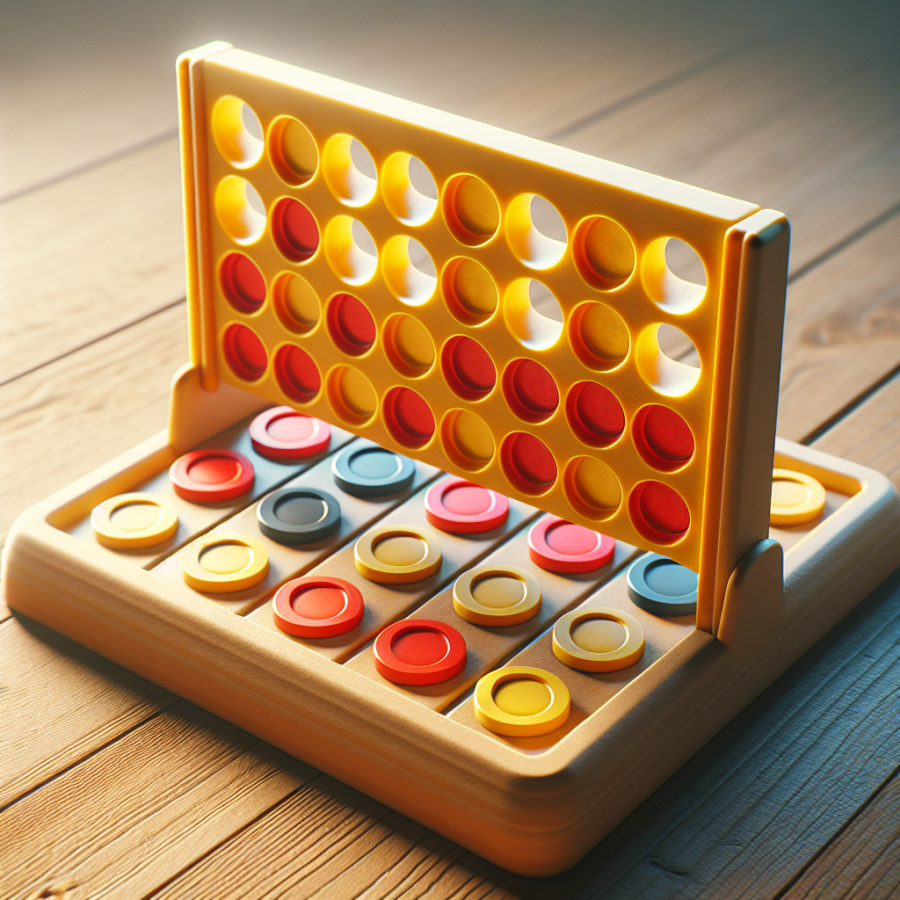Advanced Offense Techniques: Building Multiple Winning Pathways in Connect Four
In the arena of Connect Four, constructing varied paths to victory is akin to a grandmaster plotting intricate maneuvers in a chess match. When you think of Connect Four, you might visualize a simple children's game, but beneath the surface lies a complex battlefield where the advanced offense is a blend of foresight, psychology, and strategic precision. To truly master the grid, one must learn not just to react to the opponent’s moves, but also to create a web of winning opportunities.
As you delve into the depths of advanced offensive tactics in Connect Four, a key element to focus on is building multiple winning pathways. This strategy revolves around setting up potential connections that can lead to victory in several ways, forcing your opponent to play defensively and inevitably falter.
One foundational approach is the "threat stacking" technique. Here, you aim to align your checkers vertically, horizontally, and diagonally such that, with the placement of a single piece, you can create more than one winning opportunity. This ensures that if one path is blocked by the opponent, another route is still available for a win. Think of it as creating a 'backup plan'—if your primary path to victory is obstructed, the secondary option becomes your new winning path.
Another sophisticated scheme is to construct "double-ended" sequences, where both ends of a potential four-checker line are open. You tactically place your pieces such that you have two possible spots to complete a connect four, making it nearly impossible for your opponent to block you on both fronts in a single turn. By doing so, you ensure that unless the opponent can simultaneously intervene at two different locations, victory is assured.
The use of "7-shapes" and "L-shapes" plays into a further intricate offense. By creating patterns on the grid that resemble these shapes, you craft opportunities that require foresight for your opponent to recognize and counter. Given that these can subtly lead to winning formations, the untrained eye may overlook the looming threat until it is too late.
A quintessential part of advanced offense is the "forcing move." This move deliberately limits the opponent’s options such that they are compelled to place a checker in a position that then leads to your victory. It is a setup where the inevitable response to your move sets you up to align your fourth checker and claim the win. These forcing moves require exact positioning and timing, and mastering them can allow you to control the flow of the game.
Read also:
Ultimate Guide to #Skiing: Thrills & Skills on the Slopes
Deciphering the Patterns: Tips to Anticipate and Block Your Opponent's Moves
Deciphering the patterns in Connect Four gameplay involves an understanding of not only your strategy of offense but also a foresight into your opponent's next moves. As you aim to achieve a Connect Four victory, anticipating and blocking your opponent's advances become crucial tactics in the heat of the game.
To begin, it's essential to recognize common patterns that emerge during play. Opponents may try to set up a vertical, horizontal, or diagonal streak, often starting at the edges of the grid or working their way from the center outward. Keep a close eye on pieces that line up in a format that could lead to a Connect Four; this includes three connected pieces or a setup where they have non-consecutive pieces that can be connected with additional moves.
Understanding your opponent's playing style is key. Do they favor aggressive tactics, perhaps going for a quick Connect, or are they more defensive, blocking your moves while building a strategy? Recognizing these styles early on enables you to better anticipate their moves.
Next, learn to predict traps. Often, an opponent will leave a space open, baiting you to make a move that would subsequently allow them to connect four. Be wary of moves that seem too easy, and always look for the possibilities that could follow your placements.
An effective technique in both anticipating and blocking is to think multiple moves ahead. This is akin to chess, where the highest skilled players are thinking several moves into the future. Consider not only how your move will affect the present board but also how it will allow for future moves for both you and your opponent.
Creating situations with multiple threats is another way to stay ahead. For instance, by arranging your checkers in a way that they approach two separate directions of connection, you can force your opponent to block one, thereby increasing the chances of you completing the other.
For defense, always prioritize the highest row when you block. This serves two purposes: it prevents your opponent from gaining a foothold in an advantageous position, and it keeps the row open for you to potentially utilize for a Connect Four.
Using the "seven-trick" can be useful for both anticipating and blocking. By aiming to control the center column (the fourth from either side, hence the name "seven"), you create a condition where you have multiple ways of connecting four and can more easily predict and block your opponent's attempts, as many winning patterns require ownership of this central column.
Lastly, practice pattern recognition and scenarios.




